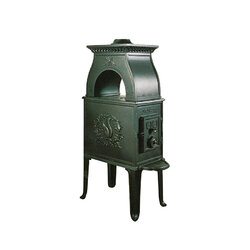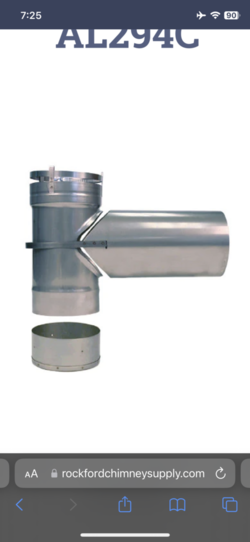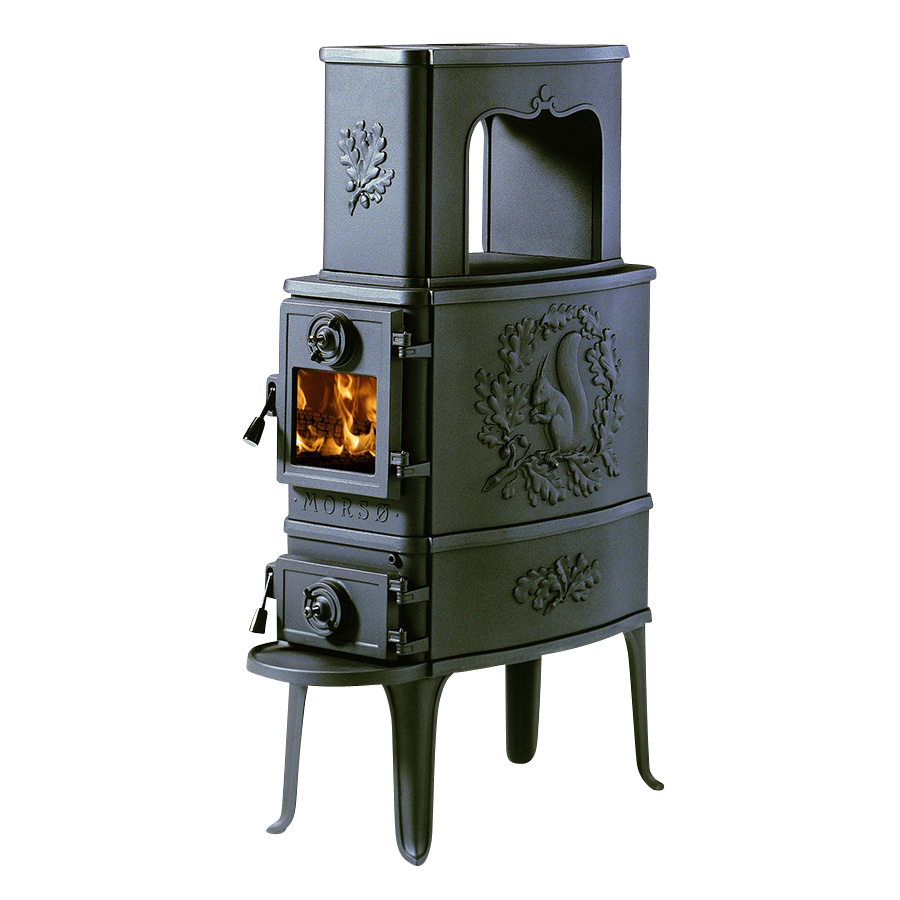I'm 77 years old, living in a passive solar home I designed and built myself, starting in 1979. Prior to building the house (post and beam, using laminated conventional lumber & plywood...and wood cut from my property with my chainsaw...and driftwood lumber(likely South American, washed off of ships coming up the Atlantic Gulf Stream, then washing onto the beach in south FL), I purchased items I thought I would use in our NC home: I saw a big sale on wood stoves, and I purchased a Morso 1B and a 1BO. I still have them both. The 1BO was used for 2 years in a home we rented, and then installed in our 'new' home, in 1985. The brick mason I hired to build our chimney (10,000 brick) was a drunk, recommended to me by a local chimney sweep (!). He was very good, when sober, but not any more knowledgeable regarding wood stoves than I was: The Scandinavian stove had a 4 3/4" exiting pipe, and he built my chimney with 8"x8" square flue tile. all the way up until he ran out, and then put a joint of 6" x 6" at the top. I found this out just before final inspection, and the previously mentioned chimney sweep helped me chisel out the 6" flue section and replace it with a piece of 8". The stove was hooked up to a 6" thimble into the 8" flue.
Now, 38 years later, we are where we are today: A chimney sweep company has informed me that I have stage 3 creosote (They have told me I likely had a small chimney fire sometime in the past.), and recommend I have them remove the 8" tile and replace it with a 4" flexible insulated stainless steel liner. While writing this, I'm wondering about the effect of the draw of a 4" flue with a 4 3/4" exit from the stove? I've been quoted ("estimate"?) about $6500 for the job. Now, back to the stove: It's a gray enameled stove. I'll attach a photo. Over the years, the "double-wall" interior side walls have cracked and warped. No replacements are available, but I've seen one stove like mine "refurbished" with 1/2" steel plate in the place of the original cast iron sections, and another with firebrick lining the inside of the exterior walls. I'm wondering. Another factor is a crack I recently noticed on the exterior wall/end opposite the door. On the outside of the panel there is a roughened circle in the center of the piece. The cast iron has cracked from the outside edge of that panel inward about 6". There is about 1/16" of visible movement in the panel position, and light is visible when looking into the stove from the open door, while a flashlight is directed at the crack area. The stove was used all winter two winters ago, and there were no obvious problems with how it burned, other than the limitations of diminished space on how much wood could be fit into the stove. The end panel that is cracked is prevented from moving much by contact with the side "double-wall" panel. I wouldn't suggest using the stove in its current condition.
As I mentioned, I purchased a 1B as well as the 1BO. The 1B is the exact same stove as the 1BO, except for the enamel color and the top panel. If I can remove the top panels from the two stoves, and exchange them, then the top from the gray stove, with the openings for the mounting of the heat exchanger, would allow the stove to operate as a 1BO. The box end of the 1B could also be exchanged with the cracked end piece from the 1BO. I believe there is an interior horizontal cast iron panel that directs the smoke/exhaust differently in the two stoves, which can also be exchanged in the two stoves. If that could be achieved (I'm not sure how much trouble would be likely encountered to dismantle both stoves.) I believe I could end up with a working 1BO with a black enameled back end, a black top, and the rest in gray enamel. Of course, it's also possible that I could dismantle the one with the cracked end, and get it welded, and put it all back together? I do hot glass work, and I've read that when welding cast iron it is a good idea to take the welded piece and immediately place it into a hot oven to be heated/annealed/cooled slowly to remove stress created by the welding. I happen to have large kilns to melt/anneal my glass work, and it seems like that might be a simpler option? But then we get back to my wondering about the 4" flexible flue working with a 4 3/4" stove exit. And wondering if I should just do without a wood stove. (I actually enjoy cutting/splitting firewood, and my wife of 53 years enjoys the radiant heat from the wood stove.) Any input would be appreciated.

Now, 38 years later, we are where we are today: A chimney sweep company has informed me that I have stage 3 creosote (They have told me I likely had a small chimney fire sometime in the past.), and recommend I have them remove the 8" tile and replace it with a 4" flexible insulated stainless steel liner. While writing this, I'm wondering about the effect of the draw of a 4" flue with a 4 3/4" exit from the stove? I've been quoted ("estimate"?) about $6500 for the job. Now, back to the stove: It's a gray enameled stove. I'll attach a photo. Over the years, the "double-wall" interior side walls have cracked and warped. No replacements are available, but I've seen one stove like mine "refurbished" with 1/2" steel plate in the place of the original cast iron sections, and another with firebrick lining the inside of the exterior walls. I'm wondering. Another factor is a crack I recently noticed on the exterior wall/end opposite the door. On the outside of the panel there is a roughened circle in the center of the piece. The cast iron has cracked from the outside edge of that panel inward about 6". There is about 1/16" of visible movement in the panel position, and light is visible when looking into the stove from the open door, while a flashlight is directed at the crack area. The stove was used all winter two winters ago, and there were no obvious problems with how it burned, other than the limitations of diminished space on how much wood could be fit into the stove. The end panel that is cracked is prevented from moving much by contact with the side "double-wall" panel. I wouldn't suggest using the stove in its current condition.
As I mentioned, I purchased a 1B as well as the 1BO. The 1B is the exact same stove as the 1BO, except for the enamel color and the top panel. If I can remove the top panels from the two stoves, and exchange them, then the top from the gray stove, with the openings for the mounting of the heat exchanger, would allow the stove to operate as a 1BO. The box end of the 1B could also be exchanged with the cracked end piece from the 1BO. I believe there is an interior horizontal cast iron panel that directs the smoke/exhaust differently in the two stoves, which can also be exchanged in the two stoves. If that could be achieved (I'm not sure how much trouble would be likely encountered to dismantle both stoves.) I believe I could end up with a working 1BO with a black enameled back end, a black top, and the rest in gray enamel. Of course, it's also possible that I could dismantle the one with the cracked end, and get it welded, and put it all back together? I do hot glass work, and I've read that when welding cast iron it is a good idea to take the welded piece and immediately place it into a hot oven to be heated/annealed/cooled slowly to remove stress created by the welding. I happen to have large kilns to melt/anneal my glass work, and it seems like that might be a simpler option? But then we get back to my wondering about the 4" flexible flue working with a 4 3/4" stove exit. And wondering if I should just do without a wood stove. (I actually enjoy cutting/splitting firewood, and my wife of 53 years enjoys the radiant heat from the wood stove.) Any input would be appreciated.




